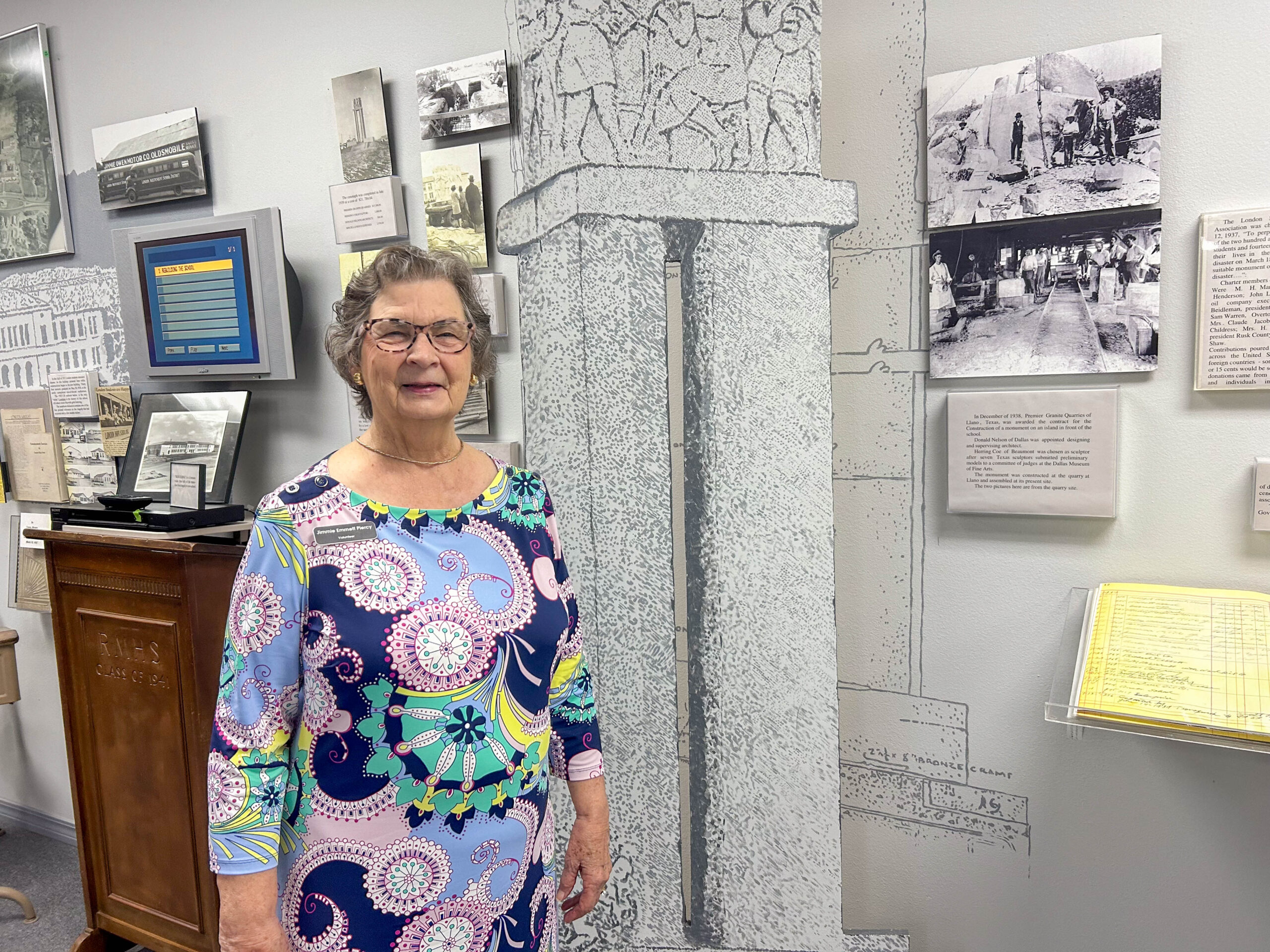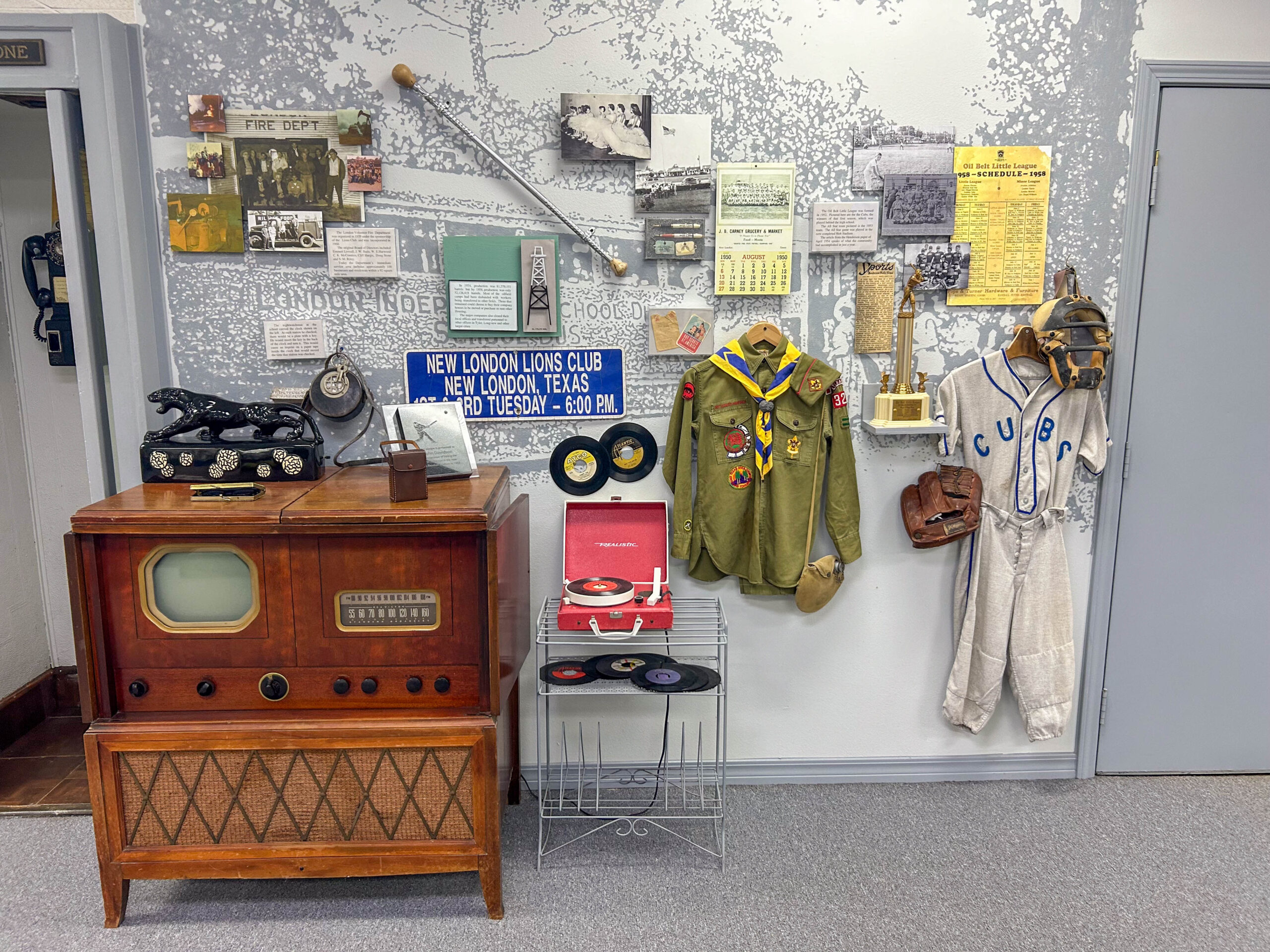The London Museum & Cafe is sort of in the middle of nowhere on Main Street in New London, Texas, a town of just under 1,000 people about half an hour east of Tyler. The location is a challenge that volunteers at the museum are well aware of, but they say visitors who make the trek are often surprised by what they find.
“I think they don’t know what to expect. And they walk back there and they’re kind of pleasantly surprised, you know. So we do hear, ‘it’s so well done.’ We hear that quite a bit,” said archivist Becky Tyner, who’s volunteered at the museum since 1997 — even before it officially opened.
The London Museum & Cafe sits to the west of the town’s four-lane Main Street. To the east is West Rusk High School, which had been known as London High School until 1965.
In a grassy opening where the road splits, marked by a brown historical marker sign, is the London School Explosion Memorial. It’s a 32-foot cenotaph made of Texas pink granite to remember the lives lost on March 18, 1937 – the day the London School exploded.























